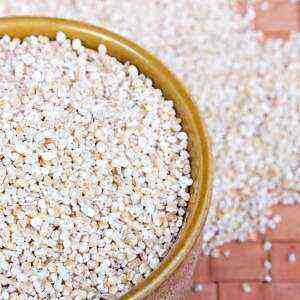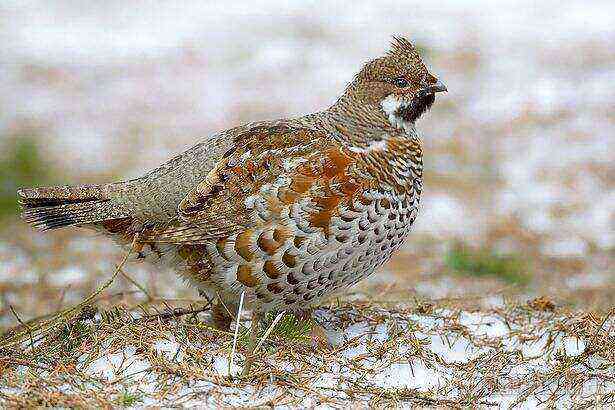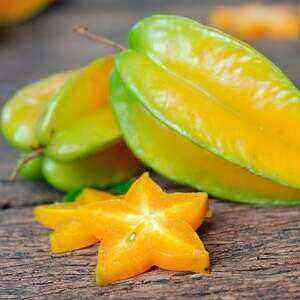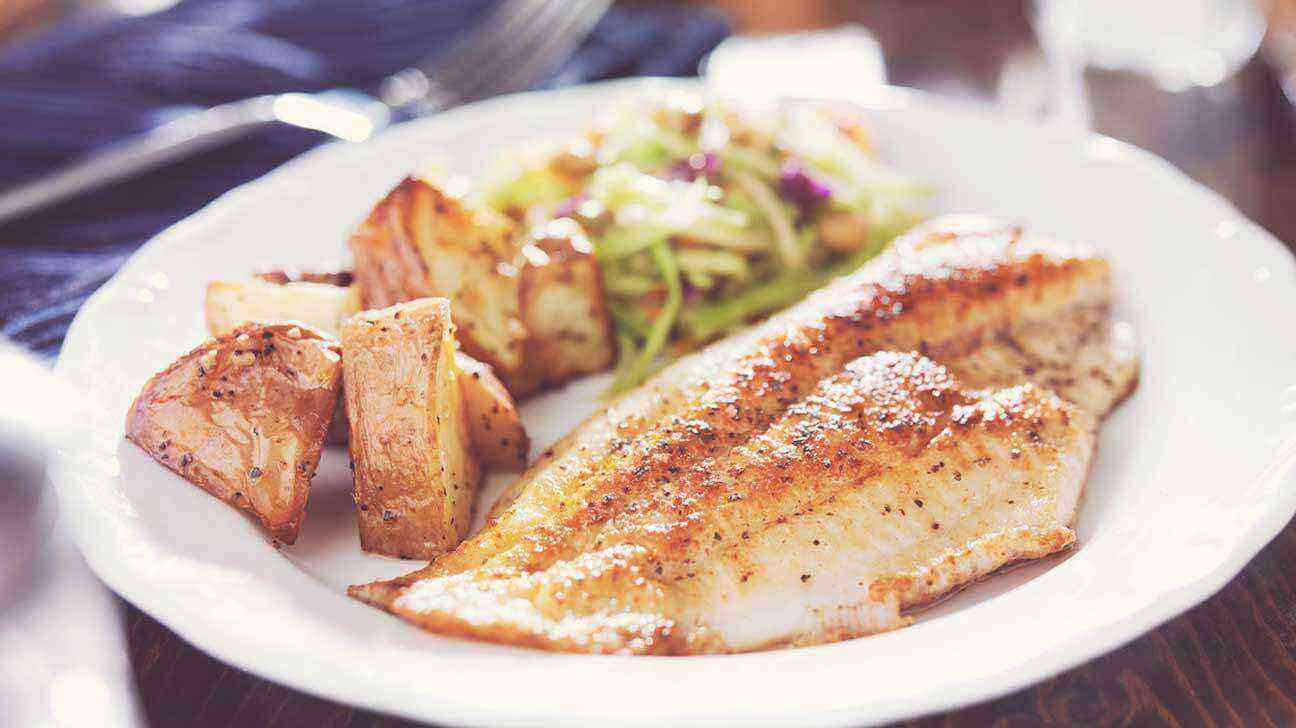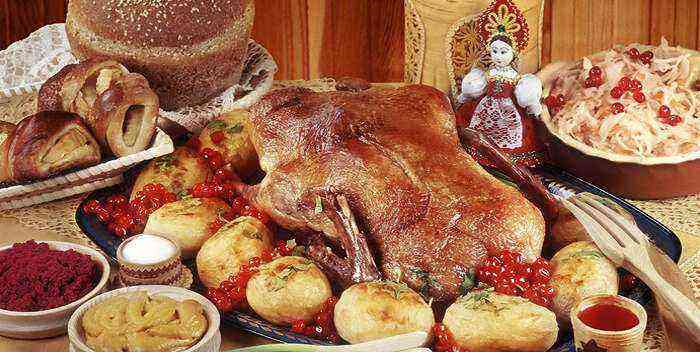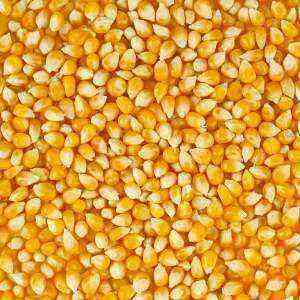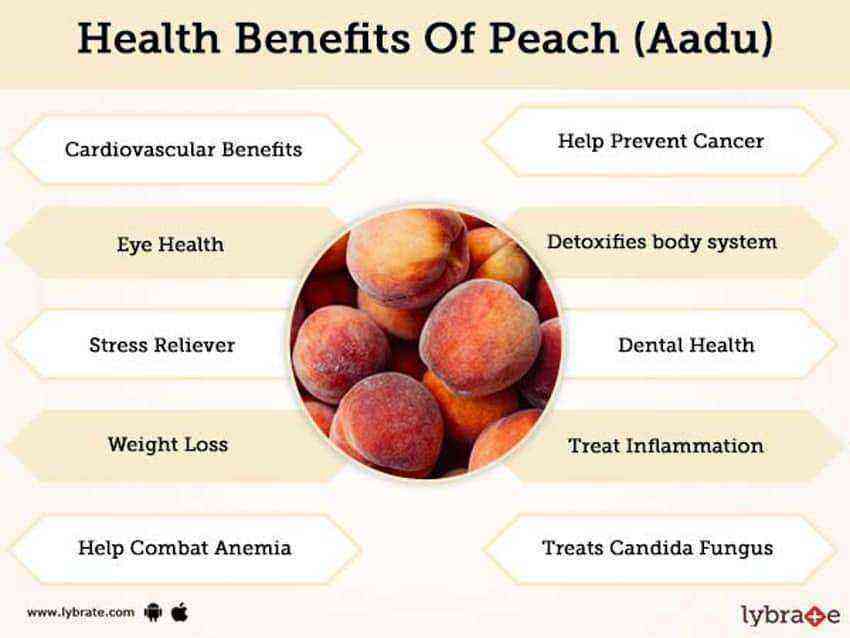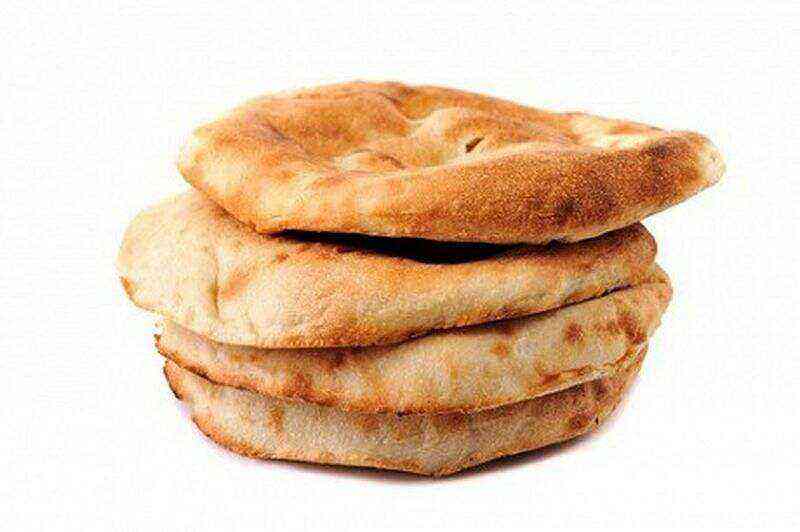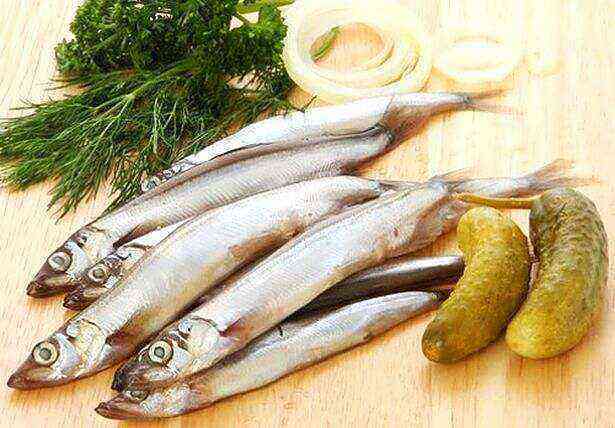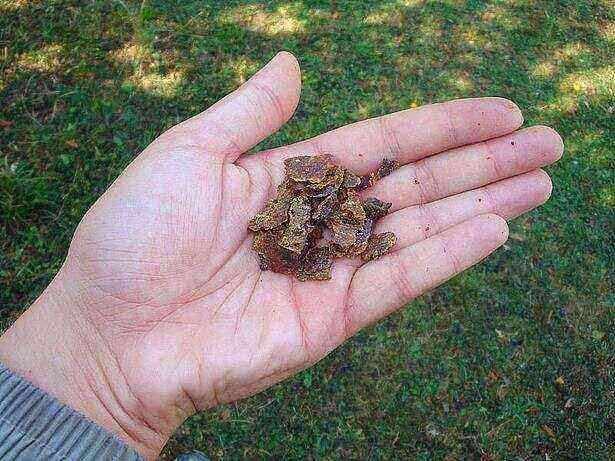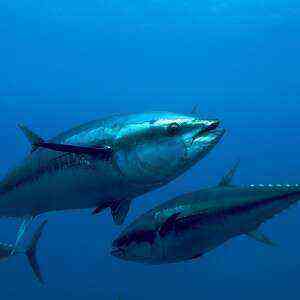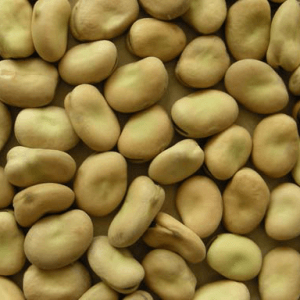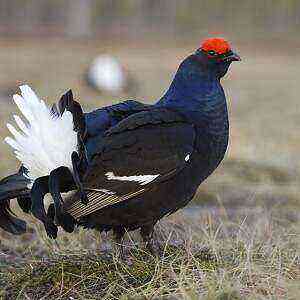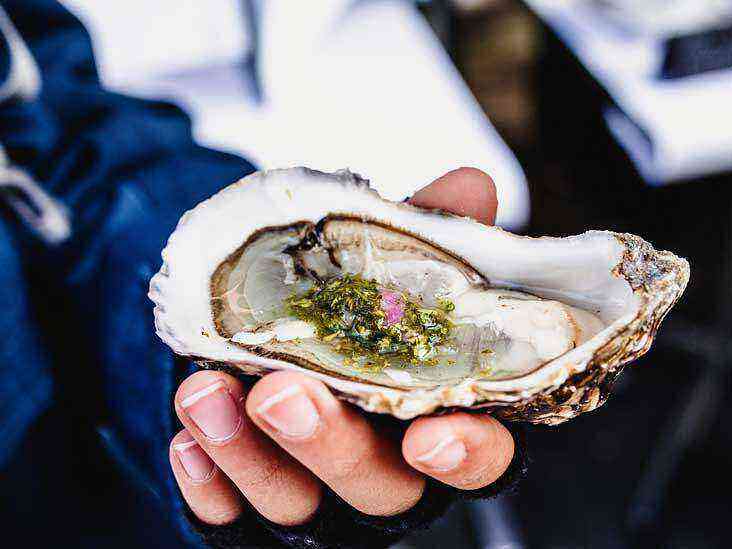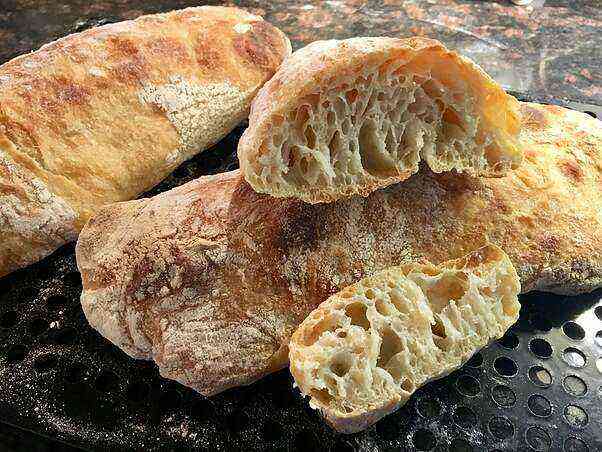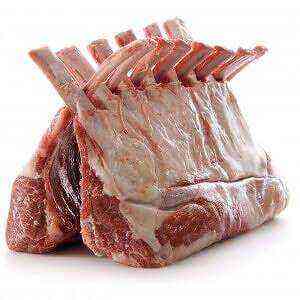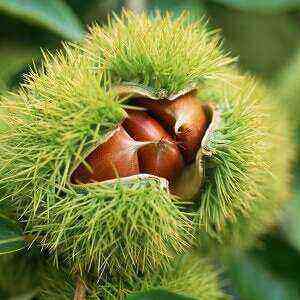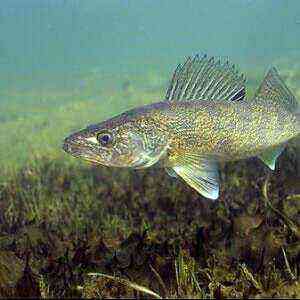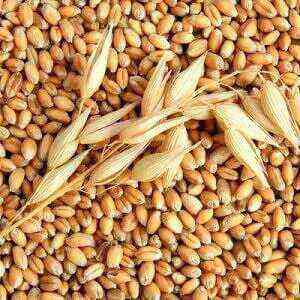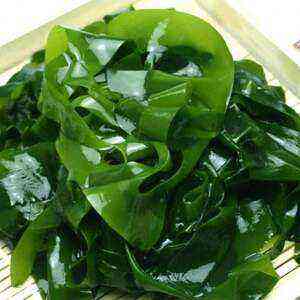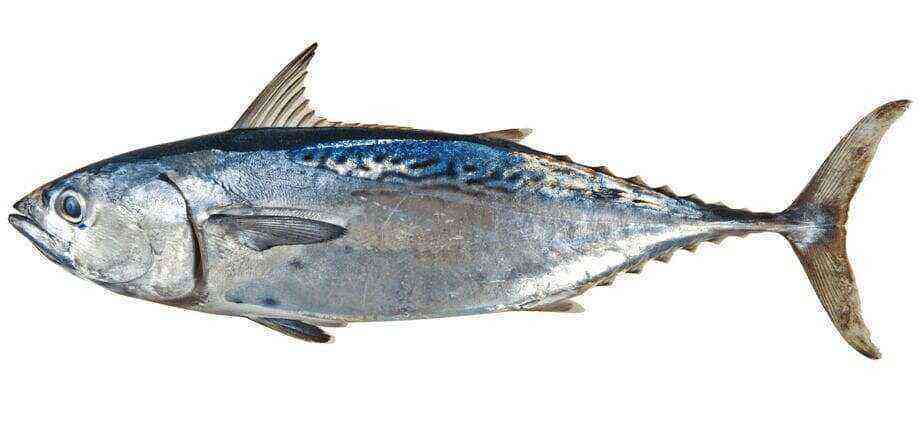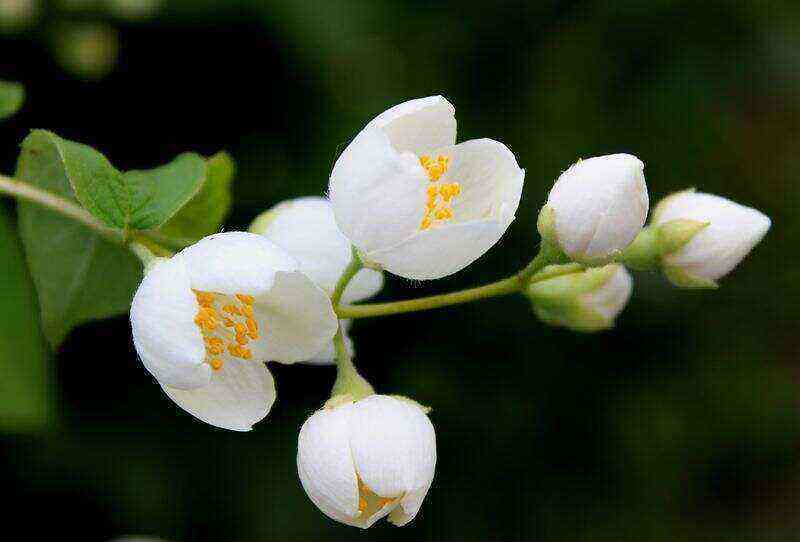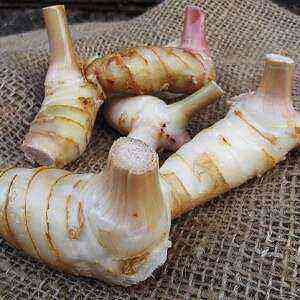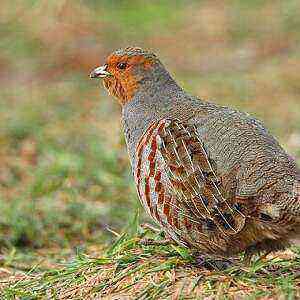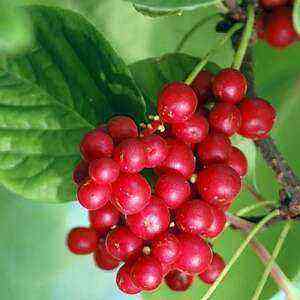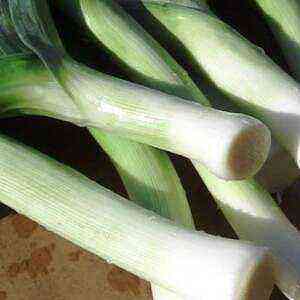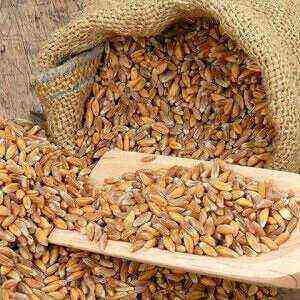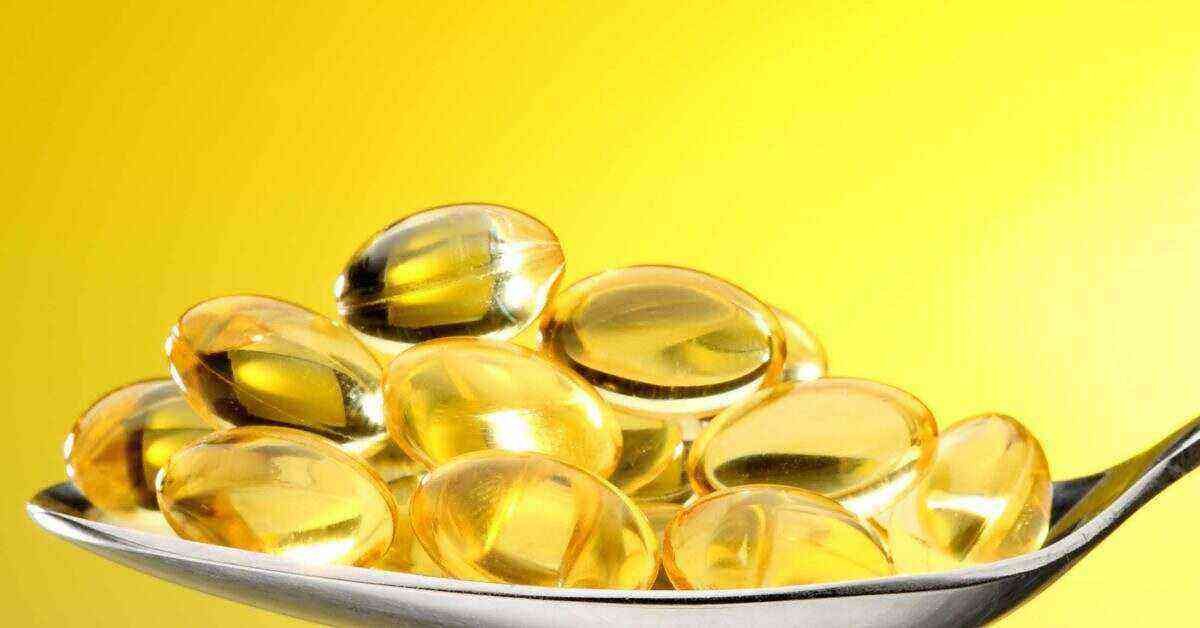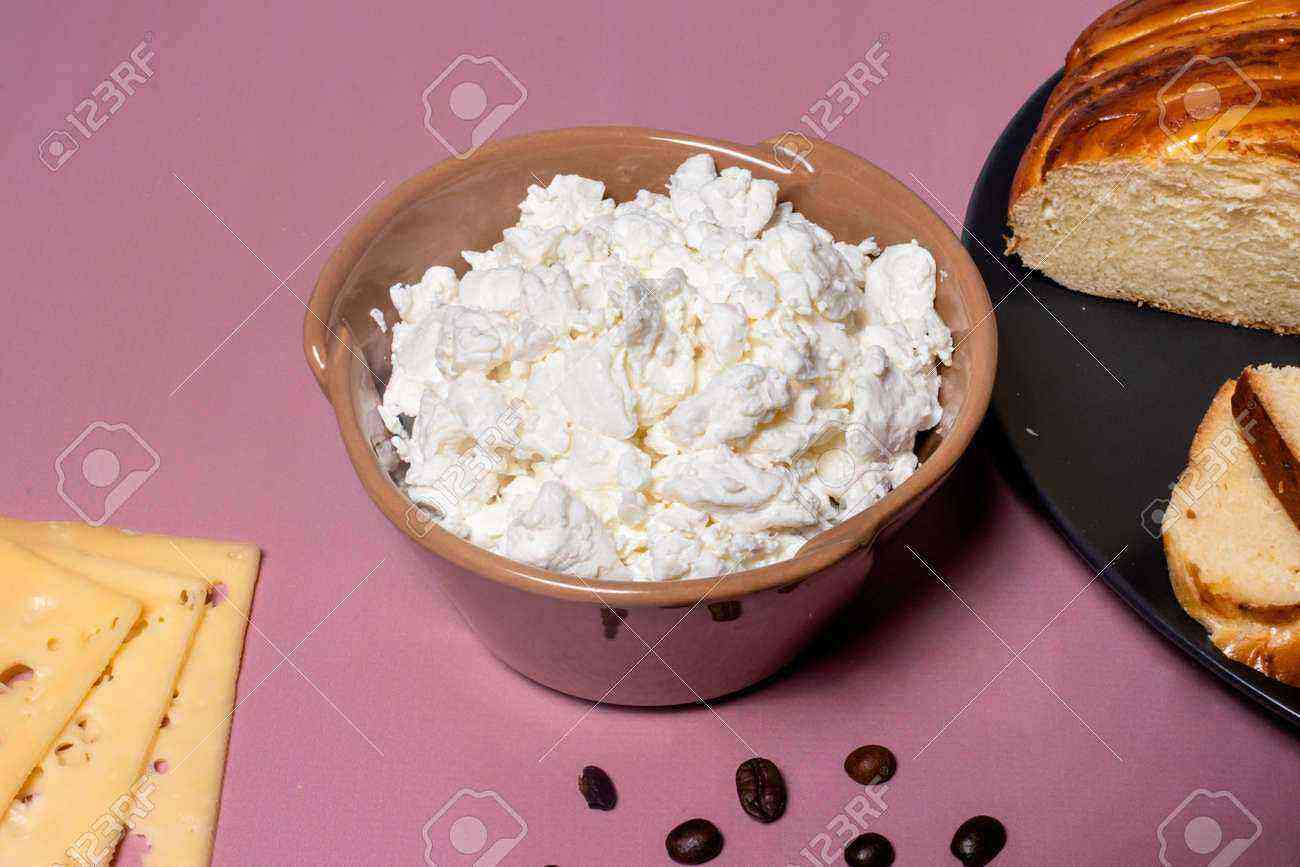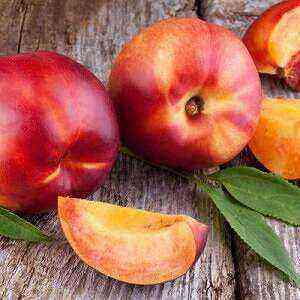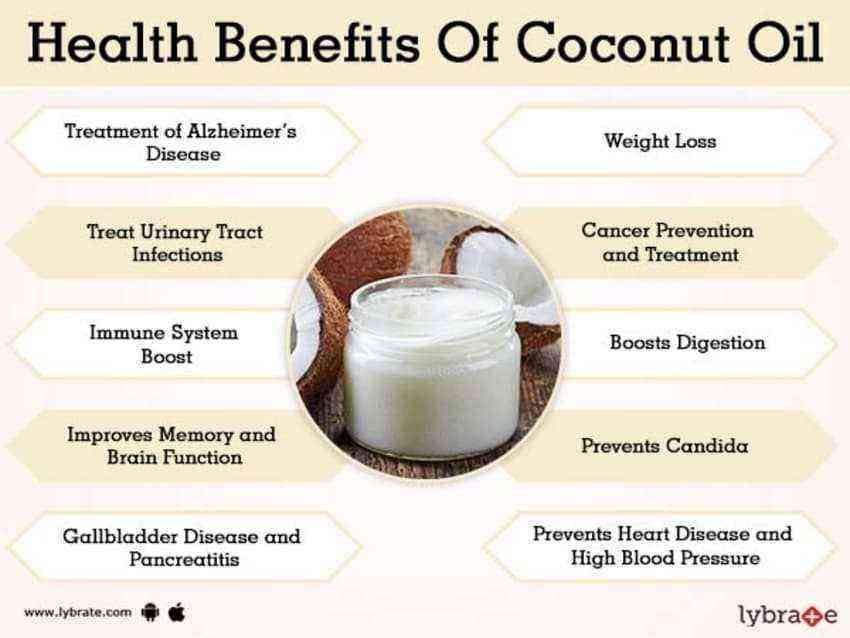
It is known that during the times of the “Great Mongols”, the emperor Akbar ordered to establish a mango garden on 100 000 trees, which later became known as “Lah Bagh”. Since then, India is considered the main supplier of this tropical fruit in the world. Mango trees occupy 70% of the country’s orchard area is 877 000 hectares. 2 million tons of crop is harvested from them annually. Today the fruit is cultivated in Brazil, Pakistan, Egypt, Madagascar, Hawaii, Mexico, South Africa, Thailand, Guatemala, Spain.
Mango is a storehouse of minerals, vitamins, enzymes, easily digestible carbohydrates, essential amino acids, dietary fiber and saturated fatty acids. Due to its rich chemical composition, the fetus has healing properties, it is used in medicine and cosmetology to improve vision and digestion, strengthen immunity, blood vessels, normalize metabolism, increase stress resistance, smooth wrinkles, and rejuvenate the skin.
According to the latest findings, scientists have concluded that the polyphenols that make up the mango exhibit anti-cancer properties: they inhibit the growth of modified cells.
Botanical characteristic
Today there are over 2000 different varieties of mangoes. They are conventionally divided into 2 types: Indo-Chinese (greenish and elongated fruit), Indian (orange-yellow and rounded). In addition, there are known intervarietal hybrids – Indo-Chinese.
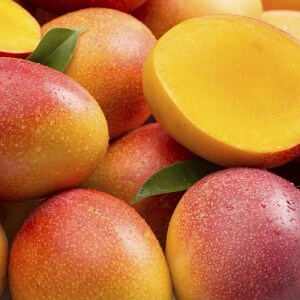
- Cogshall;
- Carrie;
- Fairchild;
- Ice Cream;
- Julie;
- Lancettila (Lancettila);
- Brooks;
- Mallika (Mallika);
- Okrung;
- Neelum.
The weight of a ripe mango fruit is 200 – 300 grams, and the diameter depends on the plant variety and varies from 10 to 20 centimeters. The fruit tastes vaguely peach. The color of the skin depends on the variety and is yellow-green, rich orange, pink, red, purple.
Mango is an evergreen tree of the tropics that reaches 20 meters in height. This is one of the most durable fruit species. The number of flowers in the inflorescences reaches up to 4000 pieces. However, their tying is extremely low. In one inflorescence, a maximum of 2 fruit ripens.
If the fruit is excessively sour – it is spoiled, tasteless – immature. Ripe fresh mango – sweet, fleshy and juicy, to the touch – smooth, resilient with a shiny surface. The presence of dents, defects, damage indicates that the product has begun to deteriorate.
Small black blotches, on the contrary, indicate the ripeness of the fruit.
Wrinkled skin – a sign of stagnation of the fetus. If the surface of the mango is wet, then the juice is leaking out. This indicates that the fruit is damaged inside.
When pressed, the peel of ripe mangoes spring and crush under the fingers. After light pressure, it should restore its original shape. The smell of fresh ripe fruit is sweetish, resinous, coniferous, strongly manifested in the stem. If the mango does not smell, then it is still unripe, it exudes an intense aroma – perespel.
The shape of the mango depends on the type of tree and is elongate-ovate, spherical, pear-shaped, ovate. In the center of the fruit concentrated inedible, large and heavy seed, length 10 centimeters, weighing 50 grams. Outside the bone is covered with a protective sheath.
Chemical composition
Mango – the most important fruit of the tropics, which in India was called the “fruit of the gods.” Its chemical composition depends on the cultivar and stage of maturation. Green fruits contain a lot of starch, which, as the fruit grows, turns into simple carbohydrates: maltose, glucose, and sucrose.
Unripe mango – a storehouse of pectin. With the formation of a hard bone, its amount decreases by more than 2 times. 15 milligrams of green fruit pulp contains as much ascorbic acid as it is concentrated in 30 milligrams of lime. At the same time, the presence of malic, succinic, citric, and oxalic organic acids gives the characteristic very acidic taste to the fruit. Ripe fruit, on the contrary, is sweet and tastes good. It contains a lot of sugars, vitamins (A, B, C, E, K, PP) and few acids.
Table No. 1 “Mango Nutritional Value”
Components
Content in 100 grams of product
Calories 65 calories Water 83,46 grams Carbohydrates 15,2 grams Mono- and disaccharides 13,66 grams Sucrose 6,97 grams Fructose 4,68 grams Glucose 2,01 grams Dietary fiber 1,6 grams Protein 0,5 grams Essential amino acids ( glycine, glutamic, aspartic acid, alanine, tyrosine, serine, proline) 0,36 grams Ash 0,36 grams Essential amino acids (isoleucine, leucine, lysine, arginine, valine, histidine, phenylalanine, methionine, threonine, tryptophan) 0,316 grams Fats 0,25 grams Saturated fatty acids (stearic, lauric, myristic, palmitic) 0,182 grams Omega-9 0,075 grams Omega-3 0,051 grams Omega-6 0,019 grams
Table No. 2 “Mango Chemical Composition”
Name
Nutrient content in 100 grams of product, milligrams
Vitamins
Ascorbic acid (C) 36,4 Pantothenic acid (B5) 0,197 Tocopherol (E) 0,9 Riboflavin (B2) 0,038 Niacin (B3) 0,669 Thiamine (B1) 0,028 Beta-carotene (A) 0,054 Choline (B4) 7,6 Pyridoxine (B6) 0,119 Phylloquinone (K) 0,0042 Folic acid (B9) 0,043
Macronutrients
Калий
165
Фосфор
14
Кальций
11
Магний
10
Натрий
1
Trace Elements
Железо
0,16
Медь
0,111
Цинк
0,09
Марганец
0,063
Селен
0,0006
A plant tranquilizer was found in the leaves of the mango tree, and tannins were found in the pulp and skin of the fruits.
Useful Properties
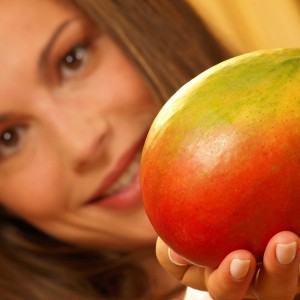
In order to cleanse the body of toxins and lose weight, mangoes are consumed with milk. A successful combination of proteins and sugars gives a feeling of satiety, lightness and creates the optimal balance of these compounds in the body.
Eat ripe, fragrant sweet fruit with a slight sour taste. When buying a green fruit, leave it in a dark warm place where it will reach the desired state. If the mango is placed in the fridge, the fruit will soften and lose its taste and beneficial properties.
The influence of the Asian apple on the human body:
- improves vision;
- normalizes digestion, fights heartburn;
- strengthens the immune system;
- protects from sunstroke;
- supports brain function;
- relieves pain;
- restores strength;
- lowers fever;
- relieves inflammation, is used to treat diseases of the gums (periodontal disease, stomatitis);
- improves mood;
- normalizes sleep;
- increases stress resistance, relieves stress;
- strengthens blood vessels, heart;
- normalizes metabolism;
- prevents the growth of malignant tumors of the colon, stomach, lactic, prostate, pancreas;
- improves the flow of bile;
- relieves fatigue;
- increases sexual activity;
- dilutes sputum;
- reduces varicose veins;
- cleans the intestinal wall of harmful substances.
Special value provides mango for women during periods of pregnancy and lactation. Exotic fruit soothes toxic symptoms, maintains normal hemoglobin levels, relieves heartburn, and constipation.
Mango fruits help to restore the female body after childbirth.
During breastfeeding, the fruit is used with caution, watching the infant’s reaction to the product. If the baby refuses to take milk, is capricious, or redness appears on his body, eliminate the mango from the diet of the young mother. From 8 months, enter the fruit in the menu of children in the form of mashed potatoes or freshly squeezed juice.
In order to avoid abdominal distention, the first times the fruit is given in small doses (5 grams), then gradually increase its amount.
To relieve heartache, a piece of mango is kept at the tip of the 6 tongue – 7 minutes, and in order to strengthen the walls of the blood vessels, they drink a decoction of dried leaves. Indian healers treat asthma with fetal seeds, acute dermatitis with fruit juice, and a mixture of Asian apple, honey and pepper remove toxins from the liver, improve the flow of bile.
Sun-dried unripe mangoes contain up to 50 milligrams of vitamin C (in 100 grams), and are indispensable for preventing winter hypovitaminosis.
Anti-cancer properties

Polyphenols are involved in the inhibition of growth, proliferation, destruction of modified breast cells. It was established experimentally that with the introduction of 5 µg / ml GAE of natural antioxidants, the division of malignant cells is reduced by 90%, non-cancerous cells – by 20%. Thus, mango polyphenols are specific for the modified tissue of the body. In addition, an exotic fruit reduces the expression of miRNA-21 – short molecules of micro-nucleonic acids associated with cancer, has anti-inflammatory activity.
In experiments with mice, scientists found that tropical culture polyphenols reduce the expression of a regulatory protein that affects the uptake of cells by oxygen. The fight against cancer – the potential of plant antioxidants mango, which today is at the stage of detailed study.
Противопоказания
The skin of a tropical Asian apple can become an allergen, and the fruit itself can be eaten. Therefore, it is recommended to clean the fruit with gloves. Pulp of ripe mango in large quantities causes fever, hives, constipation, clogs the stomach, disrupts the digestive tract.
When overeating green fruits, a person experiences discomfort in the epigastric region, due to irritation of the respiratory tract mucosa, throat and stomach. Perhaps the appearance of colic, indigestion.
Used in cosmetics
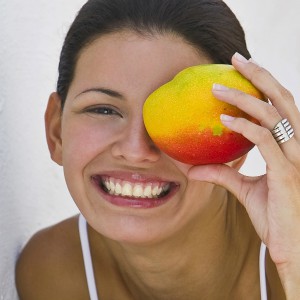
Asian apple extract or oil:
- moisturizes, nourishes, refreshes the skin;
- normalizes metabolic processes in tissues;
- relieves itching;
- eliminates irritation, dryness, peeling;
- fights pigmentation;
- restores the lipid barrier;
- prevents the appearance of stretch marks;
- softens rough areas;
- smoothes hair fiber scales;
- neutralizes the effect of free radicals;
- promotes retention of moisture after taking solar procedures;
- evens the tone of the face;
- returns the dermis softness, elasticity, elasticity;
- protects cell walls from premature destruction;
- promotes skin regeneration;
- accelerates the healing of microtraumas, wounds, cracks.
Mango is used to produce anti-aging, medical, sunscreen cosmetics, hair care products, scalp, face, body.
The secret mask of a tropical fruit
Vitamins, macro-and micronutrients that make up the mango, nourish the dermis, solve the following questions:
- ascorbic acid – rejuvenates;
- retinol – relieves inflammation, moisturizes;
- choline – soothes;
- folic acid – protects against harmful effects;
- tocopherol – tones, fights acne, acne.
The mango mask is useful for the following skin types:
- fat (regulates the sebaceous glands);
- dry (moisturizes);
- sensitive (forms a protective sheath);
- fading (smoothes wrinkles);
- problem (relieves inflammation).
To the beneficial properties of mango manifested fully, use only soft, juicy, ripe fruit. Remember, the composition of a tropical fruit includes active, aggressive substances and acids, so before applying a mask on a person, check it for allergies. To do this, spread the mixture evenly on the skin of the wrist, wait for 15 minutes. In the absence of redness, rash, burning and itching, the mask can be applied to the face.
The duration of the stay on the skin is 20 minutes. If you increase the time limit, the mango mask may cause an allergic reaction or lead to acid burns. For deep nutrition of the dermis, it is recommended to perform the procedure once a week, to improve the condition of the problem skin or to eliminate the oily sheen from the T-shaped zone – two.
The mask is applied to cleansed skin, avoiding the area around the lips and eyes. Wash off with cool water.
Mango Mask Recipes
Rejuvenating In a blender, grind the pulp of half a mango; mix the mashed potatoes with 15 grams of starch, 10 milliliters of olive oil. Stir the mixture thoroughly.
- Cleansing. Mango grind to a porridge. Almonds and oatmeal grind into flour. All the ingredients combine in equal quantities, add thick cream 35%, cosmetic clay.
- Nutritious. Ingredients: 30 grams of mango pulp puree, 15 milliliters of olive or peach oil, 5 milliliters of bee honey.
- Anti-inflammatory. Mix half the mango puree with 50 milliliters of medium fat kefir.
- For dry skin. Combine the crushed pulp of half a mango with 5 milliliters of chamomile or apricot oil, 15 grams of butter, and one egg yolk.
- For sensitive. Pulp mango pulp in mashed potatoes, apply on face.
- For oily skin. Beat the protein of one chicken egg, mash half the mango’s flesh. Combine these ingredients, add 5 grams of bee honey.
- From the black dots. Mix the mango pulp with olive oil until the consistency of thick sour cream.
- To improve the tone of the face. Boil one carrot, grate 50 grams on a grater. Grind a third of mango pulp with a fork. Combine the ingredients, add 5 milliliters of chamomile oil, 60 milliliters of pre-melted natural honey.
- From wrinkles. Steamed oatmeal. Put mango juice in porridge, natural liquid honey.
- To eliminate the stratum corneum. Scrub preparation method: 5 grams of ground almond powder mixed with 5 milliliters of natural honey, the pulp of a quarter of a medium mango. Blend the mixture to a uniform state.
- From electrifying hair. Blend half a ripe mango in a blender, add 5 milliliters of kefir 2,5%, 1 chicken yolk. Spread the mixture over the entire length of previously washed wet hair. After that, put on a plastic cap, wrap a head over it with a towel. After 20 minutes rinse hair with warm water.
Mango butter
Mango Butter is widely used for the care of the skin of the hands, body, face. It is extracted from the seeds of fruit (Indian mangifera).
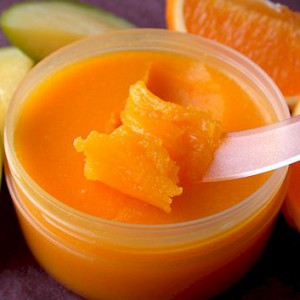
Properties of mango butter:
- accelerates tissue regeneration;
- slows the aging process in the cells of the dermis;
- moisturizes and softens the skin, relieves irritation;
- restores hair structure;
- eliminates natoptyshy;
- removes age spots;
- strengthens the nail plate;
- relieves muscle tension;
- makes hair shine;
- nourishes split ends, scalp;
- protects the dermis from ultraviolet radiation;
- relieves skin allergies.
In addition, mango butter is used to treat dry eczema, rashes, psoriasis, dermatitis.
Exotic fruit seed oil is added to the cream as an additional anti-aging, emollient, moisturizing, anesthetic, photoprotective, regenerating, anti-inflammatory component. In addition, it can be applied to the face and body in a pure form, as well as to enter into the composition of massage mixtures. Mango oil is left on the skin 20 minutes, the remnants are removed with a dry paper towel. Before use, the batter must be slightly melted in a water bath or in your hands (at 40 degrees Celsius).
 Lip balm
Lip balm
Ingredients:
- peach oil – 10 milliliters;
- beeswax – 10 grams;
- vitamin E (in liquid form) – 5 milliliters;
- mango butter – 10 milliliters.
Preparation: Heat, melt the wax, add the mango butter, bring to a liquid state. In the resulting mixture enter the remaining ingredients, mix, pour into an empty bottle. Let the balm freeze. Apply the product to the lips in the morning, in the evening, as needed (if a feeling of dryness occurs).
Mango butter is stored in a tightly closed glass container in a cool, dark place until 2 years. Contraindications to use: individual intolerance.
Mango diet
It belongs to the category of fruit methods of weight loss, well satisfies hunger, allows you to get rid of 2 – 3 extra kilogram per week. Despite the low calorie content (65 calories per 100 grams of fruit pulp), it quickly nourishes, “vitaminizes” the body, improves eyesight, strengthens the immune system, and improves the functioning of the gastrointestinal tract. For the diet, choose only ripe fruit. So you avoid stomach upset.
Product allergy and diabetes mellitus are two absolute contraindications to losing weight on a mango diet.
Course duration – a week. Every day the diet consists of the same products.
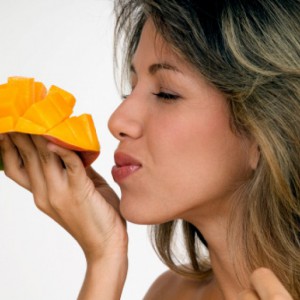
- breakfast – salad from one apple, half grapefruit and mango, 200 milliliters of milk;
- lunch – two tomatoes, 200 grams of boiled chicken, one mango, one orange;
- dinner – two mangoes, 200 grams of fat-free cottage cheese.
One and a half hours before bedtime, take 200 milliliters of kefir, 0% fat or 1% fat. During the day, drink 3 liters of pure water.
To eliminate one extra kilogram and cleanse the body of toxins, it is recommended to hold mango fasting days once a week. During this period, it is allowed to eat only ripe fruits in unlimited quantities, drink freshly squeezed fruit juice, water.
To eliminate 6 – 8 kilograms, the duration of the diet is increased to 14 days. In this case, the daily two-week diet consists of the following products:
Breakfast (choose 1 from options):
- bar of granola, one mango, one apple, black tea with lemon – 250 milliliters;
- oatmeal on water, without the use of spices – 100 grams, one mango;
- fruit and vegetable salad made of cabbage, oranges, apples, seasoned with lemon juice – 200 grams, green tea – 250 milliliters;
- low-fat cheese (“Tofu”, “Gaudetta”, “Ricotta”, “Feta”, cheese) – 50 grams, a slice of dried grain bread or toast, savory coffee – 50 milliliters.
Lunch (choose 2 dishes, one of which contains mango):
- boiled beans – 100 grams;
- boiled beets – 50 grams, coleslaw – 250 grams;
- cottage cheese casserole – 200 grams;
- mango cabbage salad with olive oil – 200 grams;
- vegetable soup – 350 milliliters, melted cheese – 10 grams;
- lean borscht (low-fat) – 300 milliliters;
- salad of oranges, apples, mango, cabbage – 200 grams;
- boiled fish (hake, pollock) – 150 grams.
Dinner (choose 2 dishes, one with mango):
- buckwheat porridge – 150 grams;
- kefir 1% – 200 milliliters, muesli – 150 grams;
- one boiled carrot, boiled bean (beans, lentils, peas, beans) – 200 grams;
- cabbage salad – 150 grams, scrambled eggs from two eggs;
- boiled fish – 100 grams;
- stewed cabbage with onions – 200 grams;
- one mango, green (herbal tea) – 250 milliliters;
- Apple and Mango Salad – 200 grams.
Interestingly, the fruit stimulates the production of an appetite suppressing hormone (leptin), so the mango diet is tolerated easily, without hungry pangs.
For a variety of menus, it is recommended to prepare fortified fat-burning smoothies. To do this, peel one orange and two kiwi from the peel, chop in a blender. Add 400 milliliters of mango juice to the pulp of citrus, mix thoroughly, drink in small sips. This drink improves digestion, speeds up metabolism, starts the process of weight loss, strengthens the immune system, removes toxins. To enhance the effect, add a pinch of red pepper, dry ginger, cinnamon to the resulting cocktail. Do not combine mangoes with alcohol.
How to clean the fruit?
Put the mango in a plate, cut as close as possible to the bone, on both sides. On the pulp of the cut part, carefully “draw” a lattice with a sharp knife, without damaging the skin. Turn it inside out, you get something like a hedgehog. Each cube of pulp cut into a plate, and with the rest of the piece, remove the skin and chop it.
- Conditionally divide the fruit into 3 equal parts, make a shallow transverse incision at the level of 1 / 3, and cut the remaining 2 / 3 in the midline along. Then take the mango by the corners of the skin, pull them, partially separating the flesh from the shell. Eat the peeled part, and then, holding the bone, remove the skin from the remaining third of the fruit.
- Cut the rind off the mango using a potato peeler or a regular sharp knife. This method is only suitable for cleaning an unripe fetus.
How to eat mango?
- If you used the first method of cleaning fruit, the resulting pieces are eaten with a knife (according to the rules of etiquette), dessert fork or prick skewers.
- The fruit can be eaten like an apple, if the peel was removed from it in the second and third ways. However, in this case, be prepared for the fact that the juice can flow over your hands, clothes.
- The pulp of the ripe fruit can be crushed in a blender, add your favorite fruit and use as a puree.
- Very soft mangoes are eaten like kiwi. To do this, cut it in half, not peeling, and eat with a teaspoon.
As a rule, mangoes are consumed fresh. However, if desired, the fruits of an exotic tree can be preserved, stewed, baked, added to salads, pizzas, smoothies, cocktails, ice cream, mousses, cakes, compotes, marmalades, sorbet. Mango is made from jelly, jam, filling for pies and pancakes, pickles, sauces, pickles. The fruit is baked with honey and curd like an apple. Lablab, a national Indian dish, is made from the young leaves of the mango tree.
On the day it is recommended to eat up the 2 fruits of the Asian apple. In larger quantities, the fruit may be harmful to health: cause indigestion, colic, constipation.
Serving, etiquette
The whole, ripe mango is cut into four parts, each of which is turned with the skin up and held with a dessert fork in place. Then the pulp is separated from the shell, and the slices are cut into pieces. Eat a mango with a fork. Before serving, a bone is extracted from the fruit. To do this, the fruit is pre-washed, then cut around the seed across the fibers, turn the halves in different directions. If the bone has grown to the pulp, it is cut out.
When setting the table near the dish with mango, they put bowls of water or put lightly moistened napkins to clean the fingers of the coloring matter concentrated in the pulp of the fruit.
To soften the oily taste, the fruit is served chilled.
Classic Mango Recipes
 Tropical Panna Cotta
Tropical Panna Cotta
Ingredients:
- heavy cream – 250 milliliters;
- water – 25 milliliters;
- mango – 1 stuff;
- sugar – 50 gram;
- milk – 250 milliliters;
- gelatin sheet;
- vanilla;
- pistachios.
Method of preparation:
- Peel the mango (with gloves), chop in a blender. Pour the finished mashed potatoes into portioned ice-cream bowls, put them in the fridge to set.
- Place the sheet gelatin in cold water, keeping the proportions on the package. In a pot with a thick bottom, enter the sugar, vanilla, cream, bring to a boil, stir until the crystals dissolve.
- Add milk, bring to a uniform state.
- Cool the creamy mass to room temperature, stirring occasionally to prevent foam formation. After that, pour it on the ice-creams over a layer of mango puree.
- Milk and fruit dessert, put in the fridge for 2 hours.
- When serving, decorate the panna cat with ground pistachios and mango slices.
Mango Salad with Shrimps
Ingredients:
- cucumbers – 3 pieces;
- lettuce – 10 pieces;
- mango – 1 stuff;
- chopped dill – 20 grams;
- shrimp – 400 grams;
- grainy mustard – 45 grams;
- white wine vinegar – 30 milliliters;
- mayonnaise – 75 grams;
- sugar – 30 gram;
- salt;
- pepper.
Principle of preparation:
- Boil, cool, peel the shrimp.
- Wash the cucumbers, peel the mangoes, cut into cubes.
- Combine sugar and vinegar, stir until dissolved. In the resulting sauce, add mustard, mayonnaise.
- Mix cucumbers, mangoes, shrimps, cover with dressing.
Serve portions on light green leaves.
 Mango sorbet
Mango sorbet
Ingredients:
- sugar – 120 gram;
- starch – 15 grams;
- mango – 2 stuff;
- water – 50 milliliters;
- juice of half a lemon;
- juice of one orange.
Technology of preparation:
- Remove from the mango peel, pulp the fruit pulp, put in the fridge.
- Mix citrus juice, add sugar, bring to a boil.
- Pre-mix the starch in water, pour to the orange-lemon syrup, heat until thick. Chill.
- Mango mashed potatoes mixed with citrus mixture until smooth. Spread out in tins, place in a refrigerator or ice maker to set. Serve chilled.
Alcoholic cocktail “Mango Daiquiri”
Ingredients:
- sugar syrup – 15 milliliters;
- lemon juice – 30 milliliters;
- mango – 0,5 stuff;
- ice – 50 grams;
- rum – 50 milliliters;
- mango juice – 30 milliliters.
Method of preparation:
- Peel the mango.
- Pulp the fruit and the remaining ingredients, whisk in a blender.
- The resulting cocktail is served in a margarita glass.
conclusions
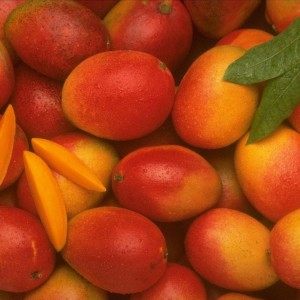
Mango is a low-calorie product, the energy value of the pulp is 65 kcal per 100 gram of edible part. Due to this, the Asian apple is widely used in methods for losing weight. It effectively quenches hunger and thirst, triggers metabolic processes in the body, due to which fat burning is accelerated. In addition, mango – a storehouse of vitamins and minerals. It contains as much ascorbic acid as lemons (36,4 milligrams).
Tropical fruit lowers cholesterol, participates in redox reactions, accelerates wound healing, normalizes blood sugar, strengthens blood vessels, neutralizes free radicals, relieves inflammation, relieves allergic manifestations, and maintains normal acid-base, water, electrolyte balance.
With regular use of 1 – 2 mango fruit a day, the fruit has a calming effect on the nervous system, relieves of nerves and stress. In addition, it removes excess fluid from the body and improves metabolic processes.
Do not store green mango in the refrigerator, it will not ripen at cold temperatures.
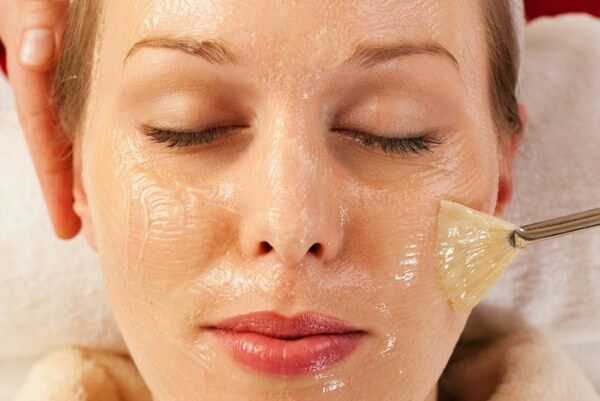 Rejuvenating In a blender, grind the pulp of half a mango; mix the mashed potatoes with 15 grams of starch, 10 milliliters of olive oil. Stir the mixture thoroughly.
Rejuvenating In a blender, grind the pulp of half a mango; mix the mashed potatoes with 15 grams of starch, 10 milliliters of olive oil. Stir the mixture thoroughly.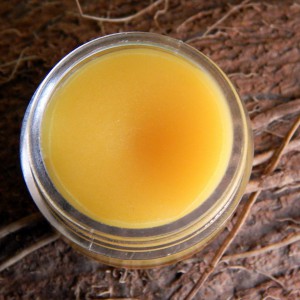 Lip balm
Lip balm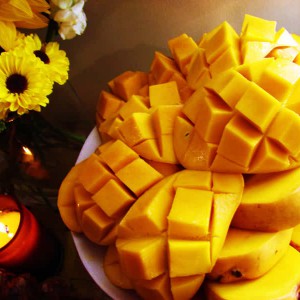 Put the mango in a plate, cut as close as possible to the bone, on both sides. On the pulp of the cut part, carefully “draw” a lattice with a sharp knife, without damaging the skin. Turn it inside out, you get something like a hedgehog. Each cube of pulp cut into a plate, and with the rest of the piece, remove the skin and chop it.
Put the mango in a plate, cut as close as possible to the bone, on both sides. On the pulp of the cut part, carefully “draw” a lattice with a sharp knife, without damaging the skin. Turn it inside out, you get something like a hedgehog. Each cube of pulp cut into a plate, and with the rest of the piece, remove the skin and chop it.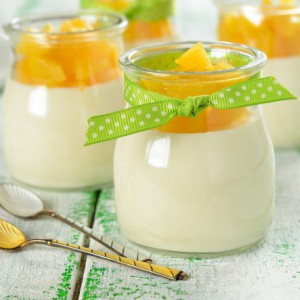 Tropical Panna Cotta
Tropical Panna Cotta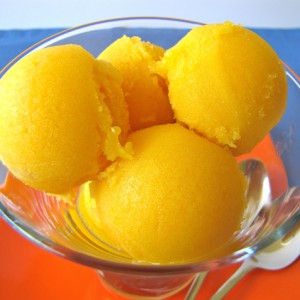 Mango sorbet
Mango sorbet